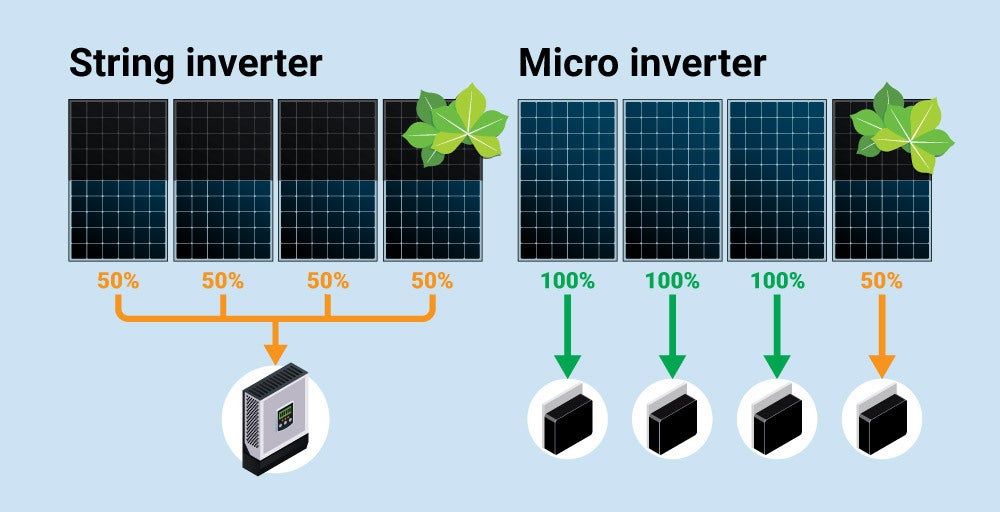
Discover the differences between string inverters, micro-inverters, and power optimizers in solar energy systems. Make an informed decision for your home!
Table Of Contents:
Introduction to Solar Inverters
String Inverters: How They Work and Their Benefits
Micro-Inverters: How They Work and Their Benefits
Power Optimizers: How They Work and Their Benefits
Conclusion: Choosing the Right Inverter for Your Solar System
Solar inverters are an essential component of any solar energy system. They are responsible for converting the direct current (DC) energy generated by your solar panels into alternating current (AC) energy that can be used to power your home or business. There are three main types of solar inverters: string inverters, micro-inverters, and power optimizers. In this article, we will discuss the differences between these three types of inverters and help you determine which one is right for your solar system.
Introduction to Solar Inverters
Before we dive into the differences between string inverters, micro-inverters, and power optimizers, let’s first discuss what solar inverters are and why they are important. As mentioned earlier, solar inverters are responsible for converting the DC energy generated by your solar panels into AC energy that can be used to power your home or business. In addition to this crucial function, inverters also monitor your solar system’s performance and provide important data on your energy production.
Without an inverter, your solar panels would be unable to provide usable energy to your home or business. That’s why choosing the right inverter is crucial to ensuring the success of your solar energy system. Let’s take a closer look at the three types of inverters available: string inverters, micro-inverters, and power optimizers.
String Inverters: How They Work and Their Benefits
String inverters are the most commonly used type of solar inverter. They work by connecting all of your solar panels in a series or “string” and converting the DC energy generated by the entire string into AC energy. String inverters are often the most cost-effective option, and they are relatively easy to install and maintain.
One of the main benefits of string inverters is their efficiency. Because they are designed to handle a large amount of power, they can operate at a high efficiency level. This means that they can convert a larger percentage of the energy generated by your solar panels into usable AC energy, resulting in higher energy production and lower electricity bills.
Another benefit of string inverters is their durability. Because they have fewer moving parts than micro-inverters or power optimizers, they tend to have a longer lifespan and require less maintenance. This can save you money on repairs and replacements over the life of your solar system.
Micro-Inverters: How They Work and Their Benefits
Micro-inverters are a newer type of solar inverter that have gained popularity in recent years. Instead of connecting all of your solar panels in a series, micro-inverters are installed on each individual panel. This allows each panel to operate independently, maximizing energy production and reducing the impact of shading or other issues that may affect one or more panels.
One of the main benefits of micro-inverters is their flexibility. Because each panel has its own inverter, you can easily add or remove panels as needed without affecting the performance of the rest of the system. This can be especially useful if you have limited roof space or if you plan to expand your solar system in the future.
Another benefit of micro-inverters is their reliability. Because each panel has its own inverter, if one panel fails or experiences an issue, it won’t affect the performance of the rest of the system. This can help to ensure.
☎️Call 703-953-9126













